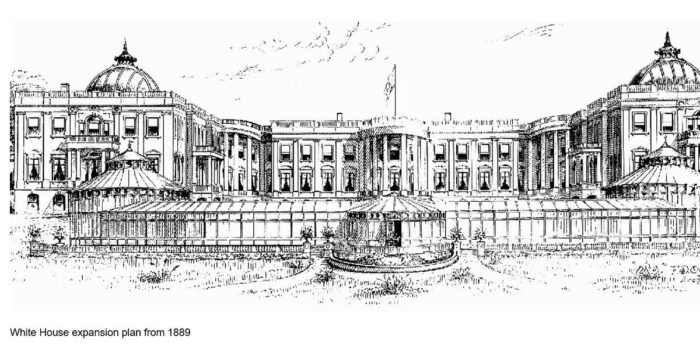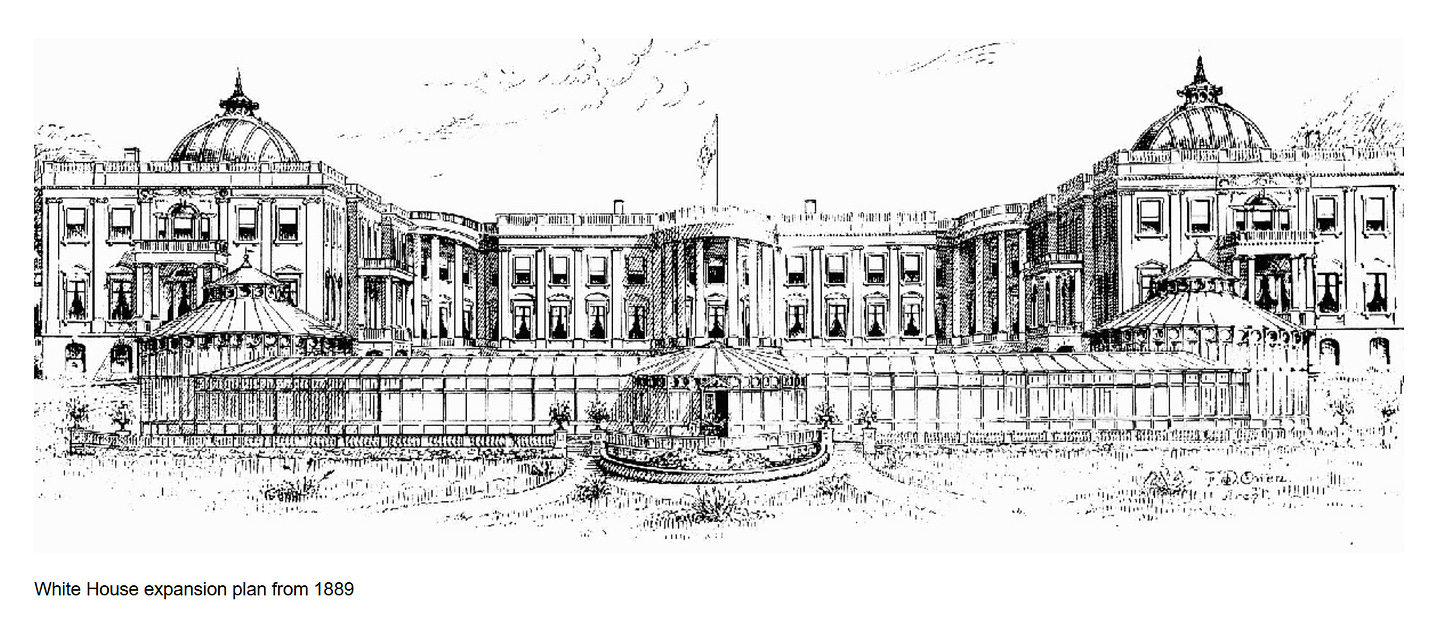Demolishing the old East Wing of the White House sparked Trump Derangement Syndrome (TDS) reactions across social media. One left-leaning Braver Angels colleague suggested a new malady. She rejected the project and with civility suggested perhaps I had Trump Apologist Syndrome, given my reaction was lack of objection and a mild defense of the demolition.
Did I? Was I supporting a Trump action in the same way folks with TDS fixate negatively to anything Trump touches? It’s a fair question to ask ourselves on any issue. Are we in support because of the person or party, or is it about actions in alignment with my values or matching my life experience? What is driving our interpretation of XYZ event or policy?
Good intentions, bless their hearts
Polarization assigns pure motives to “our side” with nefarious motives to “the other,” those despicable rascals. We want to be right, so we’re drawn to look for evidence to support our position. My side did it? Must have meant well, bless their hearts. The other side did it? Harumph. Those unscrupulous elitists (or authoritarian monarchists) must have evil intentions.
When demolition began as the first step in construction of a new East Wing, it was reported with as much shock as if aliens had unexpectedly landed on the White House lawn. Reaction from the TDS driven left objected to the demolition of an historic building, shrilly protested the proposed design, and claimed it as one more sign of President Trump’s drive to authoritarianism. There was more range in the reactions from center and right-leaning sources, focusing on the private financing, the deficiencies in the size of the East Wing ballroom and whether the correct processes had been followed. Across the board it was treated as a surprise.
Experience defines meaning
The demolition pictures flooding Facebook were a surprise, but a background in architecture and federal projects tempered my reaction. A project of this size takes many months of planning, indicating the concept must have pre-dated the current Trump administration. It may even have been briefed during the first Trump administration and been on Donald the Developer’s mind for his second term. It was most certainly not a surprise to the donors lined up to pay for it, the architecture firm that designed it, or the contractors hired to do the work.
About ten years ago I was invited to attend a meeting scheduled in a conference room in the East Wing of the White House. As an office building, it might rank as BOMA Class A for its high profile location but otherwise was similar to several of Spokane’s BOMA Class B. The finishes, dim lighting, and difficult to locate restrooms for women were typical of early 20th century office buildings. I almost knocked on the door to First Lady Michelle Obama’s office to ask where the Ladies room was, but lost my nerve and wandered until I found it one floor down. The conference room was stuffy and unimpressive. It was an ordinary office building needing updates.
Capacity for state dinners has been a problem for decades, and then there’s the security issues. Remember when President Barack Obama entertained the British Prime Minister at the biggest ever state dinner? It was held on the White House lawn because the seating capacity of the East Wing ballroom for dinner is limited. In 2009, entertaining several hundred guests meant setting up tents and porta potties in the nation’s front yard, the same as one might see at a country wedding or an urban swap meet, and then praying for good weather in November. It was made infamous by two gate-crashers who outwitted security to get into the tent.
Trump in the Ballroom with the Sledgehammer.
White House capacity and security have been subjects of passionate debate for years. Proposals for major East and West Wing additions were developed in 1889, although never built. Any change to the White House is sure to draw more brickbats than bouquets, so why would any president eagerly stick his neck out and pull the trigger on the project? With the rise of assassination culture in 2025, concerns surrounding outdoor functions had to be top of mind for White House security staff. The current president is a real estate developer who lives to build, and such an opportunity had to be irresistible.
A week or so of intermittent research to attempt to disprove my hypothesis led to fascinating reading on the development of District of Columbia in ways the EPA would never approve today, the history of change at the White House, past proposals for larger entertainment space, and arguments over the esthetics at every step. Public reporting on security concerns is limited, but not surprisingly so. It’s not the sort of information one wants to trumpet from the White House press podium.
For those in the historic preservation field wondering why the Section 106 review process wasn’t followed, it’s because Section 107 exempts the White House, the Capitol and the Supreme Court buildings. No surprise there, the federal government exempts itself from all sorts of rules private developers have to follow. Federal building remodels outside of the District of Columbia don’t even have to get local building permits. Frustration with “rules for thee but not for me” is worth a whole future essay.
The East Wing was built in 1942, almost yesterday by world standards. At a meeting of the Union Internationale des Femmes Architects (UIFA) in DC in 1989, an architect from Romania was making a presentation on a new urban design requiring the demolition of an existing structure. “It’s not very old, less than 600 years,” she said. In the United States a building only 50 years old is eligible for the National Register of Historic Places.
I appreciate the value of conserving old buildings, having worked on a fair number of historic renovation and restoration projects. Anything built before 1941 is fun to work on, has real materials and is often more readily repurposed.
But working on buildings built between the World War II years and in the early years of the 1970s energy crisis has been a good reminder of how badly things can go in an era when hubris over NEW! IMPROVED! materials fascination results in unintended consequences. Minimal insulation made sense when turning up the heat was cheap. Tightening building exteriors to lose less energy led to mold and air quality issues. Asbestos was a miracle material, until it wasn’t. What we are now calling “forever chemicals” like PFAS weren’t developed to ruin our lives but to improve them.
Journalists have filed Freedom of Information Act requests to check the rationale for demolition. I have no doubt there are plenty of reasons to support demolition. Decisions to replace rather than conserve are always a series of trade-offs between function, form and cost. There will be no consensus from the design professions, where buildings may make both “most hated” and “most liked” lists when architects are polled.
In summary
Will the new East Wing be declared a successful addition? Mr. Trump and Mrs. Obama see it differently. It will be architectural historians’ call to make decades after TDS has faded with the current generation, and the only confident prediction is there will still be no consensus.
RELEVANT LINKS:
Trump Derangement Syndrome:
Essay: https://www.wsj.com/opinion/is-trump-derangement-syndrome-real-a603e4a1?st=Jpq9jv
Interview with therapist:
Reactions to demolition:
https://ground.news/article/trump-administration-demolishing-entire-east-wing-of-the-white-house-to-add-new-ballroom_5fba2e
Biggest ever state dinner at the White House:
https://www.dailymail.co.uk/news/article-2115161/White-House-state-dinner-British-stars-come-force-join-Cameron-Obama.html
Congressional hearings on November 2009 security breach:
https://www.c-span.org/program/house-committee/white-house-state-dinner-security-breach/216252
History of the DC swamp (more accurately, tidal mud flats):
https://nickkolakowski.com/2022/01/04/draining-the-swamp-how-washington-d-c-grew-from-backwater-to-major-city/
White House renovations over the years:
Historical recap: https://thehill.com/homenews/administration/5567233-white-house-renovations-timeline/
1889 unbuilt wings – First Lady Caroline Harrison/Architect Frederick D. Owen:
https://neverwasmag.com/2018/03/unbuilt-washington-dc/
Current project recap: https://www.whitehouse.gov/About-the-white-house/The-white-house/
National Historic Preservation Act of 1966 – Section 106:
https://www.gsa.gov/real-estate/historic-preservation/historic-preservation-policy-tools/legislation-policy-and-reports/section-106-of-the-national-historic-preservation-act
National Historic Preservation Act of 1966 – Section 107:
https://www.law.cornell.edu/uscode/text/54/307104
Fact check on historic preservation:
https://www.snopes.com/fact-check/trump-east-wing-historic-preservation-laws/
BOMA Classification of office buildings:
https://www.sanalifeenergy.com/blog/an-overview-of-bomas-commercial-building-classes
Expansion plans from 1890 and commentary from an architectural perspective, with an alternative plan:
https://laurelberninteriors.com/the-new-white-house-ballroom-good-idea-or-a-colossal-mistake/
Mr. Trump vs. Mrs. Obama – needless to say, they see it differently: https://www.foxnews.com/media/trump-pushes-back-after-michelle-obama-knocks-east-wing-renovation-calling-old-arrangement-a-disaster











